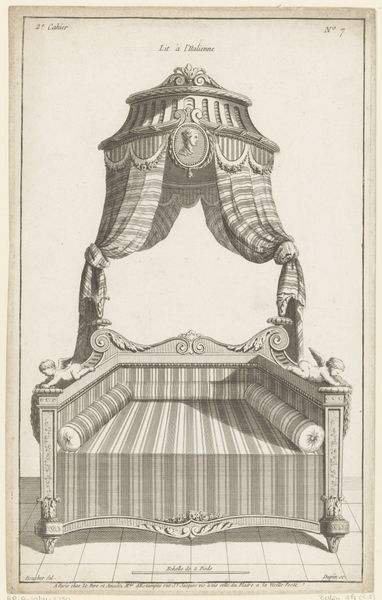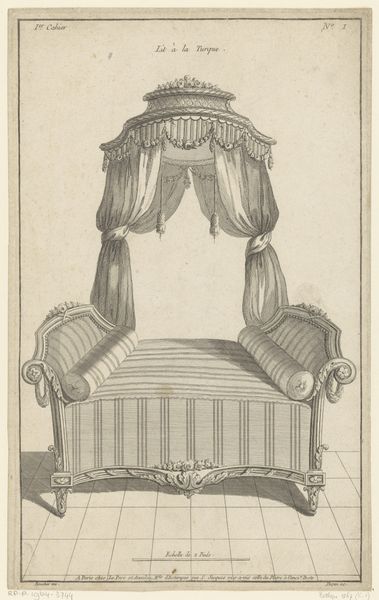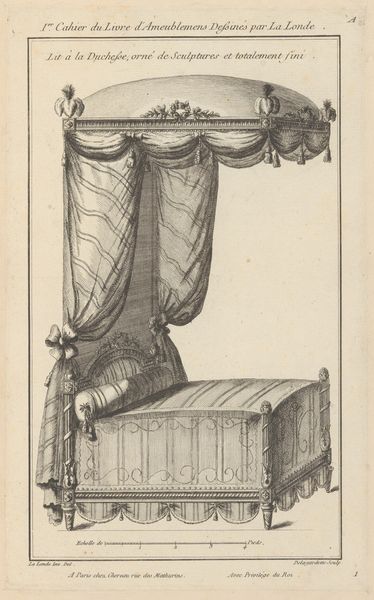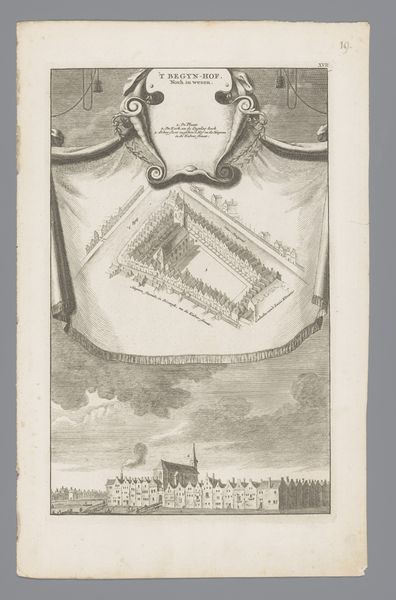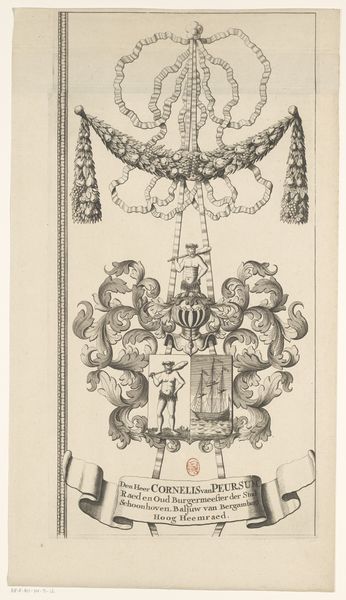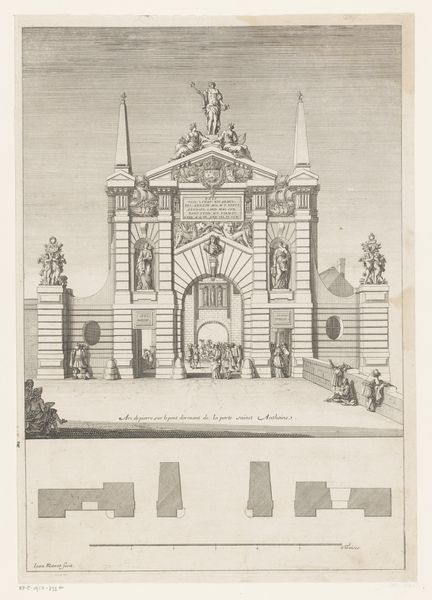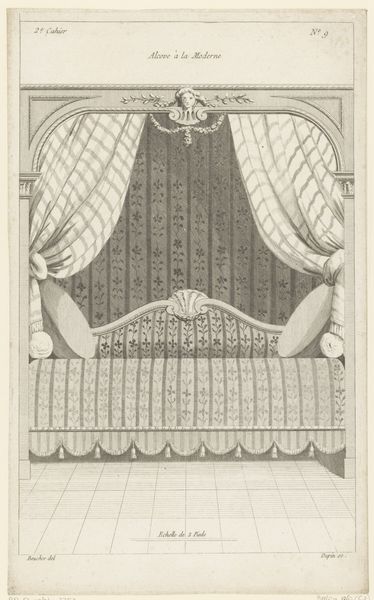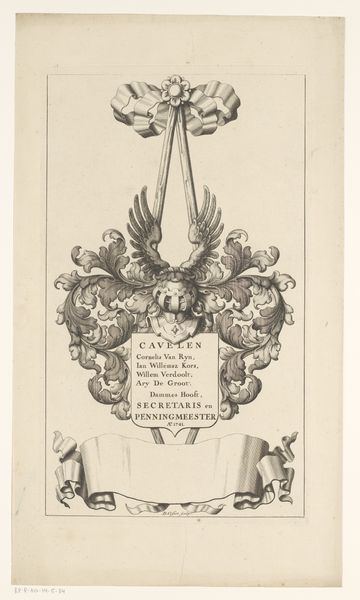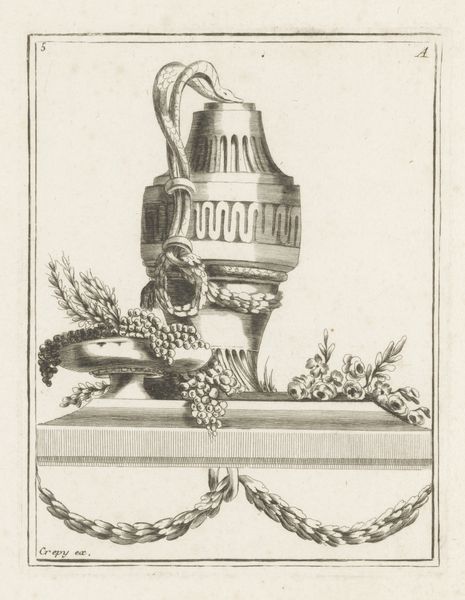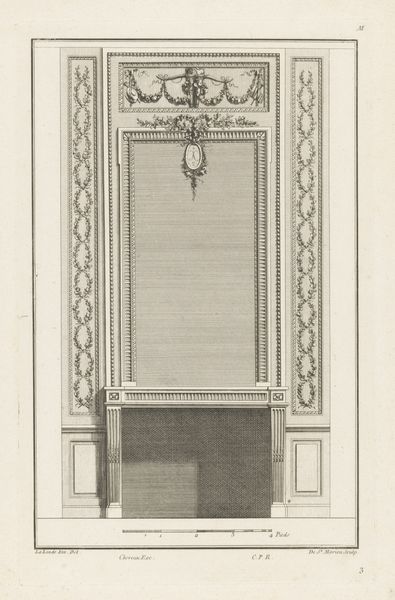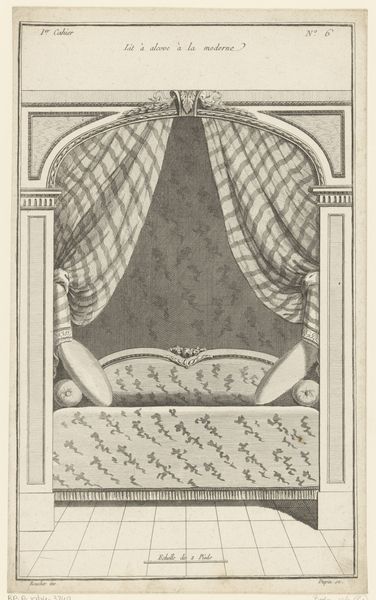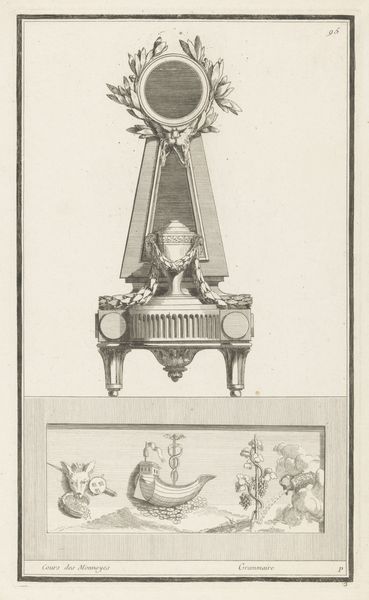
print, engraving
#
neoclacissism
# print
#
geometric
#
line
#
decorative-art
#
engraving
Dimensions: height 326 mm, width 198 mm
Copyright: Rijks Museum: Open Domain
Curator: This is a fascinating print from the Rijksmuseum, "Hemelbed met medaillon," dating back to 1772-1779 and crafted by Nicolas Dupin. What strikes you first? Editor: Its linearity, certainly. The clear geometric shapes and the precision of line create an undeniably clean, almost austere aesthetic. The composition is highly ordered, with the lines and shapes creating visual balance. Curator: And those lines also indicate material; the engraving on this print captures a vision of textile design. Think about the labor involved in creating the luxurious textiles depicted. How was textile production organized in this period? Who had access to such luxury? Editor: An interesting proposition! And while I appreciate the question, my focus rests on form. The draped fabric above the bed is fascinating. Note how Dupin renders the fall of the material, giving it shape through delicate shading, and contrast. It almost defies the two-dimensionality of the print medium. Curator: I can see that. But consider the medallion: that's more than ornamentation, but an aspirational symbol connected to an elite class, consumption, status, and potentially political alliances of that class! And let's not forget how printmaking, while skilled labor, also helped disseminate new aesthetic styles, influencing wider markets and consumer desires. Editor: A valid point. However, stripping away those contextual layers, we’re left with this object, the clean line-work, the pattern, a testament to proportion and visual harmony that really strikes the viewer and draws the eye into a sense of comfort. Curator: But Dupin didn’t conjure this from thin air. The formal elements themselves become signs of material aspiration and social power of its time, if we simply choose to dig a little bit deeper. Editor: I suppose in the end the question rests upon how one understands value itself. Is value located in the experiential qualities of the aesthetic object, or in the socio-economic network in which the design emerged and was consumed? Perhaps there is space for both. Curator: Indeed! A productive dialogue bridging the intricate elements within the engraving to larger social currents reveals far more, no?
Comments
No comments
Be the first to comment and join the conversation on the ultimate creative platform.
